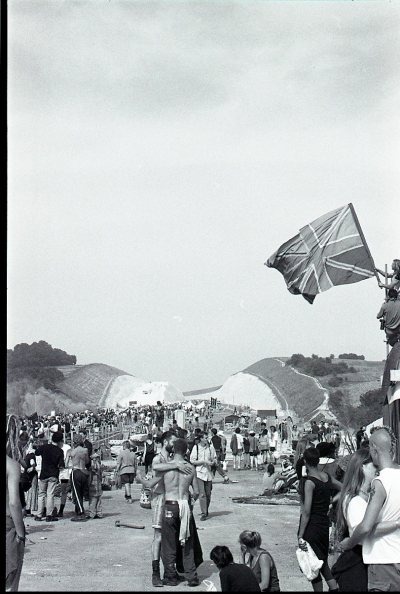
On July 4th 1994, the largest ever protest was held at Twyford Down, protesting not just about the building of the road, but about the Tory Government’s Criminal Justice Bill, which would criminalise the lifestyles of travellers, squatters and ravers in an unprecedented way. Trespass, in form of aggravated trespass, would become a criminal offence if the trespasser was aiming to stop “lawful” activities such as construction work or fox-hunting.
The principle speaker on the baking hot summer’s day was Benny Rothman, a diminutive octogenarian who had been to prison in 1932 for leading the Mass Trespass onto Kinder Scout in Peak District. That action had heralded the start of the rambling movement, as the working classes of England’s industrial cities demanded the right to enjoy the freedom of the hills.
I arrived at the Twyford Cutting a day before the scheduled Mass Trespass in opposition to the Criminal Justice Bill and this gave me an opportunity to look at the site where such destruction of the environment had taken place and where the history of the fight to oppose this devastation had been made. It also gave me the opportunity to meet up with the people who had led this now famous campaign of opposition.
The Cutting of broken chalk rocks to carry the road stood out glaringly white, in the surrounding sea of green vegetation. Already some of the road had been surfaced and work was in progress with tarmac carriers, rollers and earthmovers moving on the new surface. What was the most outstanding activity was the constant movement of four wheeled vehicles carrying Group 4 security guards endlessly. No wonder the contractors were putting millions of pounds aside to maintain this picture of warlike hostility to any opposition…like an army of occupation in hostile territory.
